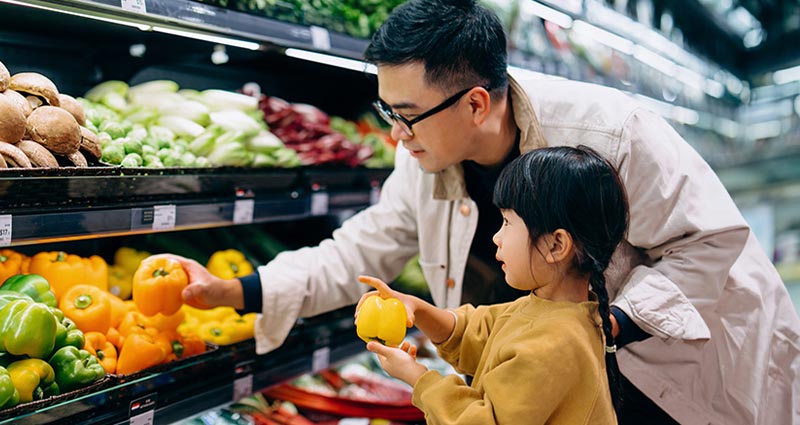Clean eating: How to source your fruits and vegetables

The four pillars of healthy lifestyle are nutrition, sleep, activity and managing stress.1
Eating well promotes health and wellness.2 Include a rainbow of colorful fruits and vegetables, proteins, whole grains and low- or non-fat dairy products.2 These provide vitamins, minerals, nutrients and fiber for our bodies.1,2,3
However, where you get your fruits and vegetables and what types you choose can affect the nutrition you receive. In a perfect world, we’d all eat only fresh and local. Our produce would come from gardens, orchards, farms and dairies within walking or driving distance of our homes.
The reality is that we shop for our food in nearby markets, groceries, wholesale clubs and, if we’re lucky, farmers markets. Decision-making is loaded with variables. Organic? Pesticide-free? No GMOs? What does it mean? How much does it matter? And what is the cost?
Explaining the variables
Organic foods come from soil that is certified to have had no prohibited substances applied for three years prior to harvest. These farmers use natural substances and physical, mechanical or biologically based farming methods.3 This often makes it more expensive to grow because these crops are vulnerable to pests and plant diseases chemical treatments could prevent.
GMOs, or genetically modified organisms, are crops bioengineered to be resistant to harmful bugs and diseases. GMOs include corn, soybeans, cotton, alfalfa and more. While we may not eat foods that are GMOs, we eat foods with ingredients that come from GMOs. You may find GMOs in corn starch, corn syrup, many oils and sugars.3, 4
How to eat cleaner fruits and vegetables
- Buy produce when it’s in season–You know it’s as fresh as it can be.
- Buy produce as close to the source as possible–Farm stands, farmers markets or local country markets source local fruits and vegetables.
- Determine your priorities for buying organic produce–Fruits with thick skins (bananas, pineapple, avocado, melon) are less affected by pesticides than berries, leafy greens or tree fruits.5
- Participate in a CSA–Community Supported Agriculture (CSA) allows people in more urban areas to get produce straight from a farm. Typically, you buy into a CSA in the spring and pick up a share weekly through the growing season.6
Be sure to always wash any fruits and vegetables you bring into your home. And enjoy the natural and hopefully, chemical-free goodnes
Now that you know what fruits to buy, try out these mouthwatering fruit recipes.
1https://www.cdc.gov/healthyweight/index.html
2https://www.hsph.harvard.edu/nutritionsource/clean-eating
3https://www.usda.gov/media/blog/2012/03/22/organic-101-what-usda-organic-label-means
4https://www.fda.gov/food/agricultural-biotechnology/gmo-crops-animal-food-and-beyond
5https://www.ewg.org/foodnews/full-list.php
6https://greenamerica.org/csas
Was this article helpful?
Sign up to unlock your health, your way at no cost to you.
This content is not intended to be a substitute for professional medical advice, diagnosis or treatment. Always seek the advice of your physician or other qualified health provider with any questions you may have regarding a medical condition.
